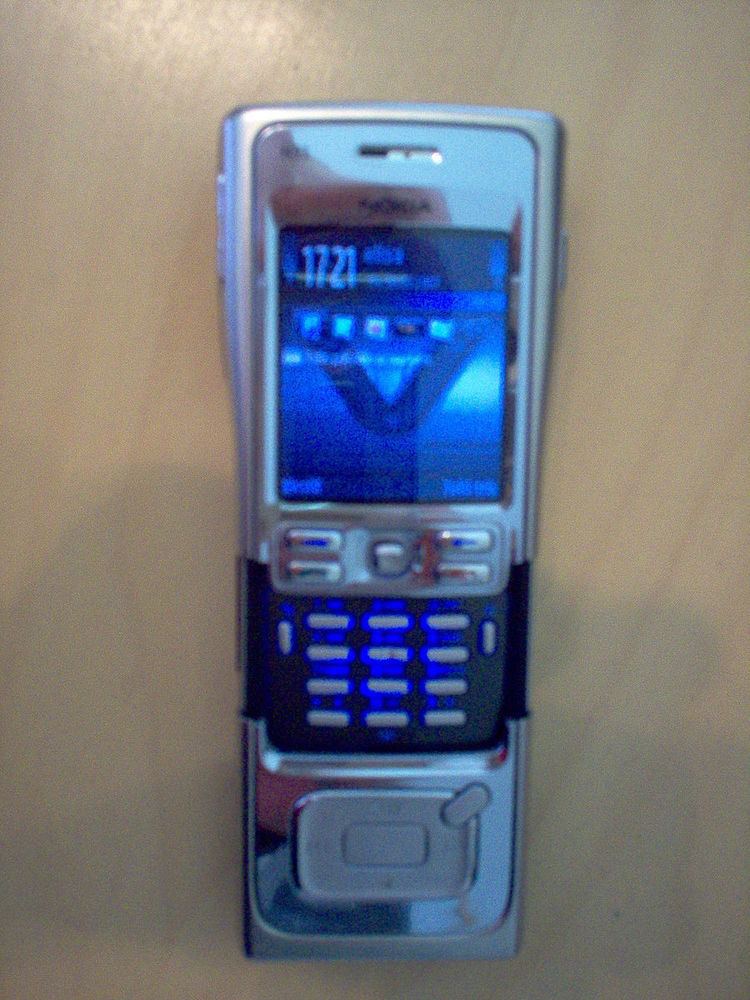Weight 160 grams approx. | Availability by country 2006 Form factor slider | |
 | ||
The Nokia N91 is a smartphone announced on April 27, 2005, as part of the new multimedia Nseries line. It runs on the Symbian-based S60 3rd Edition (the first to run on Symbian 9.1). At the time of release, it was the most advanced music phone ever launched by Nokia. It was the first ever phone encompassing a 4 GB internal hard drive, allowing storage for 3,000 songs (an 8 GB revision came later). There are dedicated music keys on the front, which slide down to reveal the keypad. It also featured the industry-standard 3.5 mm headphone jack, and was anticipated as a major challenger to Apple, whose iPod dominated the industry. The design of the N91 is based on stainless steel with a matte finish.
Contents
The N91 became one of 2005's most anticipated phones, however it suffered from a long delay of release. It was expected to begin shipping by the end of 2005; but in September that year the device was delayed till 2006. In February 2006, it was delayed yet again due to software issues, pushing the release to Q2. Finally in April 2006 it was first released to consumers, a full year after announcement.
Nevertheless, N91 won the 'Most Innovative Product' and 'Most Technologically Advanced Product' award in recognition of its true multimedia music experience, added together with its high-end smartphone capabilities. In advertisements for the phone, Nokia recommended Bose and Sennheiser headphones.
Features
It features a 2-megapixel camera and a music player playing songs encoded in either AAC, AAC+, eAAC+, MP3, mp3PRO, WAV, MIDI, or Microsoft's WMA format. It is generally considered the benchmark in the music department, simply for its unparalleled sound quality through headphones. It also features 3G and Wi-Fi connectivity. The phone features a 176 x 208, 262,144 colours TFT LCD display and dedicated music functionality buttons (XpressMusic) that slide down to reveal traditional mobile phone keys. Battery life when solely playing music has been estimated at 12 hours.
The N91 was not the first smartphone with a gigabyte hard drive: the Samsung SGH-i300, announced just a month before the N91, was the first. However the N91 packed in 4 GB, compared to 3 GB for the i300.
Variants
An 8 GB variant, internally known as N91-2, was announced on September 26, 2006. This upgraded model features some minor improvements in addition to the extra storage space. The most prominent feature on the N91-2, apart from the increased memory, was the inclusion of A2DP Bluetooth Profile. This profile enabled wireless music playback over Bluetooth, in full stereo (2 different channels, L+R). Compatible Bluetooth headsets were already available in the market by then. N91-2 had a distinct black color, that added to its face value. Once again breaking a record: it was the first phone with an 8 GB hard disk.
N91-5 was a version of the N91 with the 4 GB memory, but without Wi-Fi (WLAN) and 3G Network support. It was produced by the Chinese plant of Nokia. This model retailed for about 50 Euros less than the regular N91.
Audio quality
The Nokia N91 has been praised with an impeccable reputation of the best sounding mobile phone ever produced (the majority of stand alone portable music players can hardly compete with it either). The audio reproduction is spot on and is comparable to high end music systems. It is also considered to have the loudest audio output on a mobile phone. Its 'Loudness' and 'Stereo widening' effects, when used together, provide astonishing tonal clarity and dynamic range. The Nokia N91 uses a special DSP-33 chip set made by Toshiba and a powerful in-built Harman Kardon amplifier to boost up its volume while maintaining acoustics, resulting in louder, deep bass and rich sound with perfect low, mid range & a slightly damped high range frequency which has not been achieved by any iPod or Sony Walkmans.[8] The slight damping in the high frequency is a boon for music listeners as it won't strain the ears even after prolonged use. This is one of the few standard hand held devices which can drive high end & higher impedance headset's with considerable volume. Test conducted, the N91 wins over iPod Nano in its signal to noise ratio, output power at full volume, and output at 10–100 Hz.
Problems and criticisms
There have been a few problems with the N91, namely connecting the phone to a Macintosh computer. This will often cause the phone to crash as the two units are disconnected and music files are often not recognised despite being loaded into the phone's hard drive. Also, in old firmware versions, when you install a new theme, it will reset itself back to the default theme. Users can update the firmware using Nokia's PC Suite.
In the Philippines, there was an incident involving an N91 being used with one of Nokia's 46 million recalled BL-5C lithium-ion batteries, and exploded as a result.
